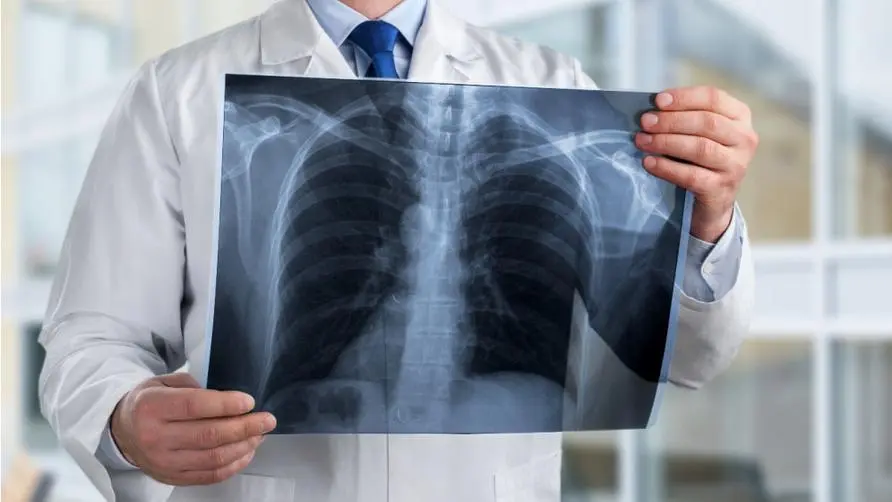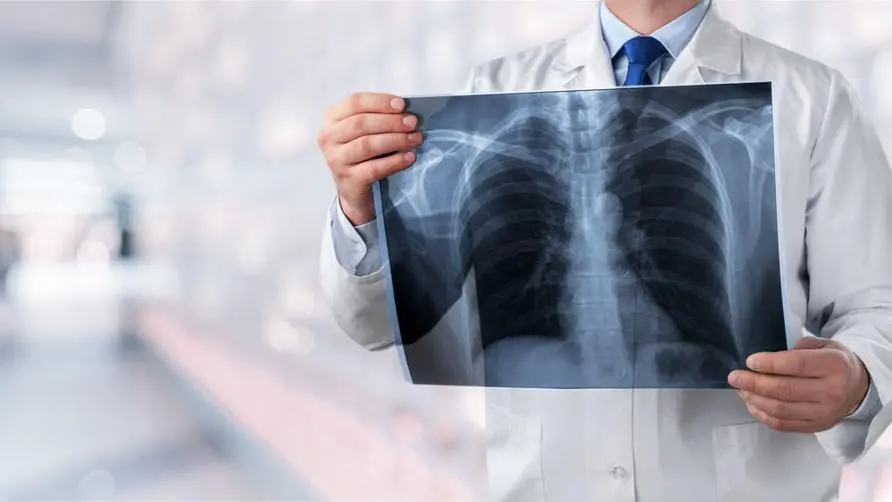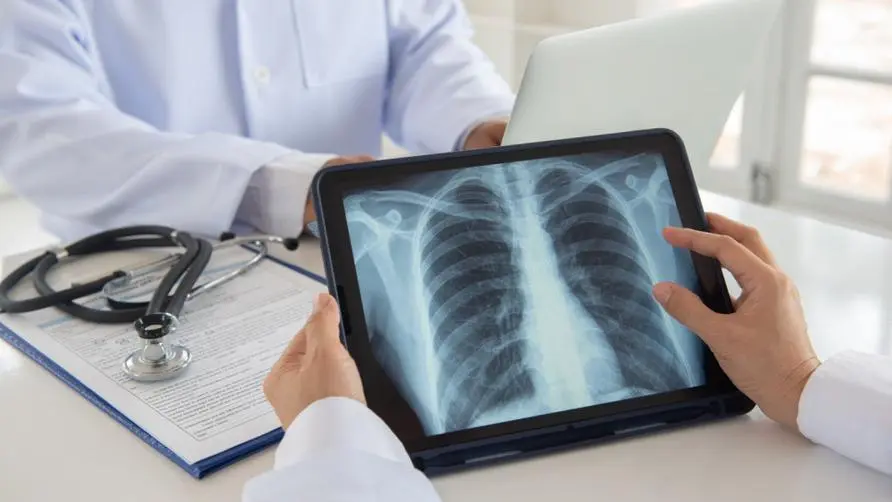With the popularization of LDCT screening, early-stage lung cancer has doubled, but the recurrence rate is approaching 60%? Immunotherapy PD-L1 inhibitor destroys tumor cover-up

Lung cancer has become Taiwan’s new national disease! Early lung cancer incidence rates and risk factors
According to statistics on the top ten causes of cancer death in 2022, lung cancer causes 10,053 deaths a year, ranking first among the top ten cancers in mortality. And according to the latest 2021 cancer registration report, the incidence of lung cancer has also jumped to the top. It can be said to be “Taiwan’s new national disease”. The survival rate of lung cancer is related to the stage of diagnosis. As many as 85% of new lung cancer patients detected through screening under the Lung Cancer Early Detection Program are early-stage lung cancer. In the foreseeable future, the proportion of lung cancer initially diagnosed in the early stage will continue to increase. Higher and higher. However, early-stage lung cancer still faces varying degrees of risk of recurrence even after surgical resection. Therefore, how to reduce postoperative recurrence is an important issue in caring for early-stage lung cancer patients at present and in the future.
Xiao Shixin, director of the Department of Thoracic Medicine at Taipei Medical University Hospital, said that smoking, a history of tuberculosis, air pollution suspended particles, and exposure to carcinogens such as radon are all known risk factors for lung cancer. However, non-smokers will develop lung cancer: especially lung adenocarcinoma. The proportion of women is increasing year by year, and the background reasons have not yet been clearly explained. Before the key reasons for “non-smokers suffering from lung cancer” cannot be understood, early detection of lung cancer through low-dose computed tomography LDCT, and taking corresponding postoperative adjuvant treatment based on the cancer stage and personalized detection to reduce the risk of recurrence, is an improvement. Key to overall lung cancer survival.
3-60% of patients with stage 2 and stage 3 fear recurrence within 2 years! Adjuvant therapy after surgery is one of the keys to the prognosis of early stage lung cancer
Surgical resection is the primary way to treat early-stage lung cancer. However, Dr. Xiao Shixin pointed out that even if the pathology report after surgery shows that the lung cancer tumor has been completely removed based on imaging, there may still be trace amounts of cancer cells flowing into the blood or microcirculation before or during surgery. Travel to other nearby organs, causing recurrence or even metastasis after subsequent surgery. The average recurrence rate of early-stage lung cancer is about 10% to 40%, and the rate of stage 2 and stage 3A is 30-60%. There is a risk of recurrence within 2 years, and the higher the stage, the higher the risk of recurrence. The prognosis The more unsatisfactory it is, as long as it is stage 1B or above lung cancer, it is recommended to receive adjuvant treatment.
Dr. Xiao Shixin said that in order to reduce the risk of recurrence of early-stage lung cancer, the standard postoperative adjuvant treatment adopted in the past two decades was mainly chemotherapy, but it could only prolong the overall survival rate by about 5.4%. In recent years, targeted therapy and immunotherapy for lung cancer have continued to progress, and the options for postoperative adjuvant therapy have increased. By detecting gene mutations and immune checkpoint performance, there is an opportunity to find more favorable adjuvant therapy methods.
“So far, postoperative chemotherapy for early-stage lung cancer is still the standard treatment. Whether targeted therapy or immunotherapy can be added depends on gene expression and the expression level of immune checkpoint PD-L1. Usually, the higher the expression level of PD-L1, the better the immune response. The greater the benefits of treatment!” Dr. Xiao Shixin suggested that patients with early-stage lung cancer can discuss with their doctors in advance whether to test the expression of immune checkpoint PD-L1 to understand their suitable adjuvant therapy and prepare for the long-term battle against lung cancer.
Blocking tumor brakes can reduce the recurrence rate by 55%! Immunotherapy PD-L1 inhibitor helps cure early-stage lung cancer
Why can immunotherapy reduce lung cancer recurrence? Dr. Xiao Shixin explained that cancer cells will inhibit the regulation of human immune cells, resulting in the loss of the function of attacking cancer cells. The immune checkpoint PD-L1 inhibitor in immunotherapy can block the “brake” of tumors from stepping on the immune system, destroy the tumor’s immune evasion, awaken killer T cells, and allow the suppressed immune system to reactivate and detect It can kill very small amounts of cancer cells hidden in the body or inhibit their growth, thereby reducing the recurrence of cancer.
Dr. Xiao Shixin pointed out that immunotherapy has been used in stage 4 lung cancer from the beginning, and now its therapeutic advantages have been proven in early-stage lung cancer such as stage 2 and even some stage 3 lung cancer. Large clinical trials have shown that receiving standard adjuvant chemotherapy after surgery and then receiving PD-L1 inhibitors as adjuvant therapy for about 1 year can help patients with lung tumors with PD-L1 manifestations reduce the recurrence rate by more than 30%, and PD-L1 Patients with high performance have a better chance of reducing the risk of recurrence by more than 55%, breaking through the previous treatment bottleneck of adjuvant treatment for early-stage lung cancer.
Immune checkpoint PD-L1 inhibitors are an important breakthrough in cancer treatment in recent years. The US cancer treatment guidelines “NCCN” have included PD-L1 inhibitors in the adjuvant treatment guidelines. Dr. Xiao Shixin said that lung cancers without relevant key oncogene mutations are within the scope of immunotherapy. The emergence of new clinical trial evidence means that treatment concepts should be updated accordingly, especially early stage lung cancer such as stage 2 and stage 3, which should receive precise adjuvant therapy. In this generation with high incidence of lung cancer, it will be a powerful tool to prevent recurrence and fight for cure.
Will the 5-year survival rate of lung cancer double in the future? Early understanding of immune PD-L1 manifestations before surgery
“Judging from the health insurance database, early-stage lung cancer has accounted for more than 30% of all lung cancers from 10-20% in the past. With the help of tools such as low-dose computed tomography, it is even possible to find “stage zero” lung cancer! In Taiwan, The future goal is to double the 5-year survival rate of lung cancer. How to detect it early and reduce recurrence is the key!”
Dr. Xiao Shixin reminded that the most important principles for preventing lung cancer include staying away from known risks, such as smoking, exposure to carcinogens, etc. In addition, you should establish healthy living habits. Those who are at high risk or have a family history can be screened according to the Early Lung Cancer Detection Program. Once early-stage lung cancer is discovered, you can consult a doctor before and after surgery to understand your own cancer genes and immune checkpoint expression levels as early as possible, discuss with the doctor the most suitable precision adjuvant treatment, and formulate a personalized treatment strategy to minimize the risk of lung cancer recurrence.
References:
See statistics on causes of death in Taiwan from the Ministry of Health and Welfare in 2022
Stage II-IIIA (TNM 7th edition/select stage II-IIIB) (TNM 8th edition); (1). Clinical cutoff: 21 January 2021. LR, locoregional. a Post-hoc descriptive analysis. Felip, et al. ESMO Presentation. 2021; (2). Hotta K, Matsuo K, Ueoka H, Kiura K, Tabata M, Tanimoto M. J Clin Oncol. 2004 Oct 1; 22(19):3852-9. (3). Sasaki, H ., Suzuki, A., Tatematsu, T., Shitara, M., Hikosaka, Y., Okuda, K., Moriyama, S., Yano, M., & Fujii, Y. (2014). Prognosis of recurrent non -small cell lung cancer following complete resection. Oncology letters, 7(4), 1300–1304.
Extended reading:





